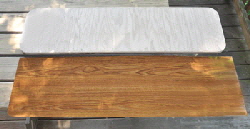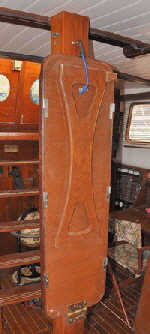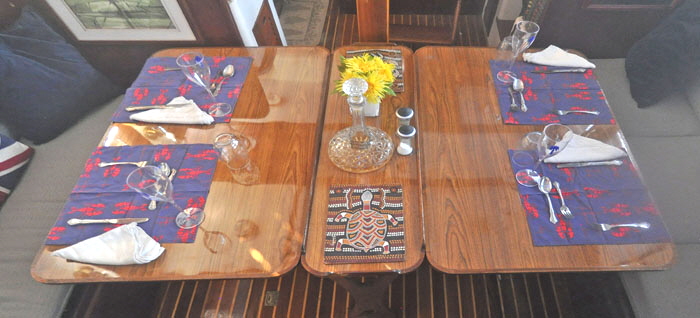
 The dining table can seat six and has laminated tops with a Formica type melamine laminate that is both hard and scratch resistant with a high gloss finish that looks just like real varnished teak.
The dining table can seat six and has laminated tops with a Formica type melamine laminate that is both hard and scratch resistant with a high gloss finish that looks just like real varnished teak.
The leaves are hinged using six stainless steel sliding pull-apart hinges, three on each leaf. These enable the leaves to be easily detached from the center section when necessary, like when needing access to the floorboards.
A 4-inch brass butt hinge supports the end of the table, enabling the center section to hinge upwards and hang with a strop to the post whenever access to the floorboards in needed. The table can be easily removed completely when necessary, by simply knocking the hinge pin out to separate the two halves.
The other end of the table is supported by a shaped a leg and hinged to allow the leg to fold flat to the underside of the center section whenever it was lifted to get to the floorboards.
When both leaves are extended the new table looks positively baronial. But more importantly, it is very much more functional and easily seats five, yet when the leaves are down it is smaller than the original and allows access all round.
